
Discovering the perfect sweet sake can transform your drinking experience, offering a delightful blend of flavors that tantalize your taste buds. Whether you're a seasoned sake enthusiast or new to this exquisite Japanese beverage, our guide is designed to help you navigate the world of sweet sake with ease and excitement.
What Makes Sake Sweet?
The sweetness in sake is a fascinating interplay of brewing techniques, rice variety, and fermentation processes, which together create the unique flavor profiles that can range from dry to lusciously sweet. Understanding the sweetness in sake involves delving into several key aspects of its production.
The Role of Rice
The type of rice used and the degree to which it is polished (milled) play pivotal roles in determining the final taste of sake. Sake rice, known as "sakamai," is specially cultivated for brewing. The more the rice is polished, the more the outer layers containing proteins and fats are removed, leaving the starchy center. This starchy center is crucial for producing a cleaner, more refined flavor, which can influence the perception of sweetness. Higher polish rates often lead to sake with more delicate and subtle flavors, potentially enhancing its sweet characteristics.
Fermentation Process
Sake's fermentation process is unique due to the simultaneous occurrence of saccharification (the conversion of starch into sugars) and fermentation (the conversion of sugar into alcohol). This process is facilitated by koji mold (Aspergillus oryzae), which breaks down the starches in rice into fermentable sugars. The yeast then ferments these sugars into alcohol. The balance between the sugar conversion and fermentation rate can affect the sweetness of the sake. If the fermentation is stopped while there are still residual sugars, the sake will have a sweeter taste.
Yeast Strains and Temperature
Different strains of yeast not only contribute to sake's overall flavor profile but also to its sweetness. Some yeast strains produce more glycerol, which adds to the sake's sweet and smooth mouthfeel. Additionally, the fermentation temperature can influence the sake's sweetness. Cooler fermentation temperatures generally slow down the yeast activity, potentially leading to a sweeter sake due to less sugar being converted into alcohol.
Sake Meter Value (SMV)

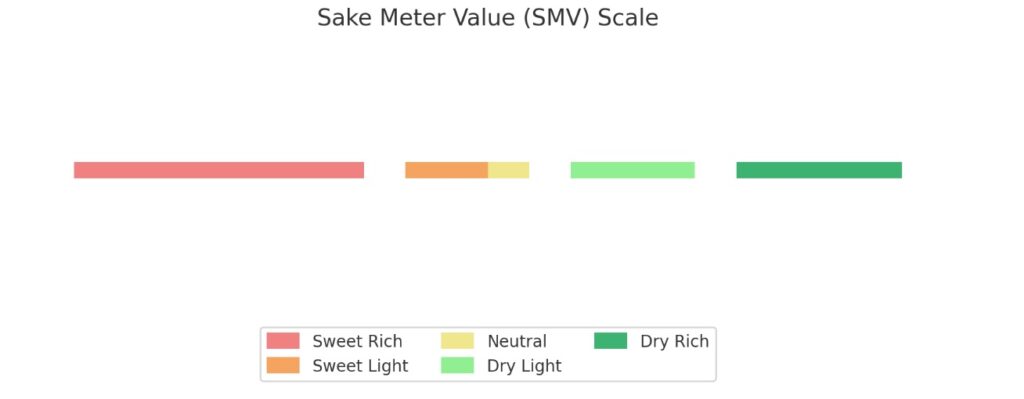
Here's a visual representation of the Sake Meter Value (SMV) Scale, including categories from "Sweet Rich" to "Dry Rich". This scale helps in understanding the sweetness or dryness of sake:
Sweet Rich: Indicates sake with a deep, rich sweetness, with SMV values ranging from -10 to -3.
Sweet Light: Represents sake with a lighter, more subtle sweetness, with SMV values between -2 and 0.
Neutral: Sake that balances between sweet and dry, with an SMV close to 0.
Dry Light: Sake with a light dryness, having SMV values from 2 to 5.
Dry Rich: Denotes sake with a pronounced, rich dryness, with SMV values from 6 to 10.
The sweetness of sake is often measured using the Sake Meter Value (SMV), which indicates the density of sake compared to water. A higher SMV means a drier sake, while a lower SMV indicates a sweeter sake. This scale helps consumers understand the general taste profile of the sake before tasting it.
Types of Sweet Sake
Sweet sake can come in various styles, including but not limited to:
- Junmai: Pure rice sake with no added distilled alcohol can exhibit natural sweetness, especially if it has a lower SMV.
- Nigori: Cloudy sake, which is coarsely filtered, often retains some of the rice solids and has a creamy, sweeter taste.
- Dessert Sake: Specially crafted to be sweet, these sakes are perfect for enjoying with or as a dessert.
In summary, the sweetness of sake is a complex trait influenced by the choice of rice, the degree of rice polishing, the fermentation process, yeast strains, and brewing techniques. Each brewer's unique approach to these factors can result in a wide spectrum of sweet sake varieties, each offering a distinct taste and aroma profile. Whether you prefer a subtly sweet Junmai or a richly sweet dessert sake, the world of sweet sake offers a delightful exploration into the craftsmanship behind brewing Japan's iconic beverage.
Best 10 Sweet Sake Brands
Finding the perfect sweet sake is a journey of taste and exploration. Here are several brands that are celebrated for their quality and delightful sweetness, all of which are readily available in the U.S.:
Exploring the realm of sweet sake offers a delightful journey into the nuanced flavors and aromas that this traditional Japanese beverage has to offer. Whether you're a seasoned sake enthusiast or just beginning to explore its rich tapestry, the following brands stand out for their exceptional sweetness and quality, making them must-tries for anyone looking to indulge in the sweeter side of sake. These selections are widely available in the U.S., ensuring that you can easily embark on this flavorful adventure.
Hakutsuru Sayuri Nigori Sake:
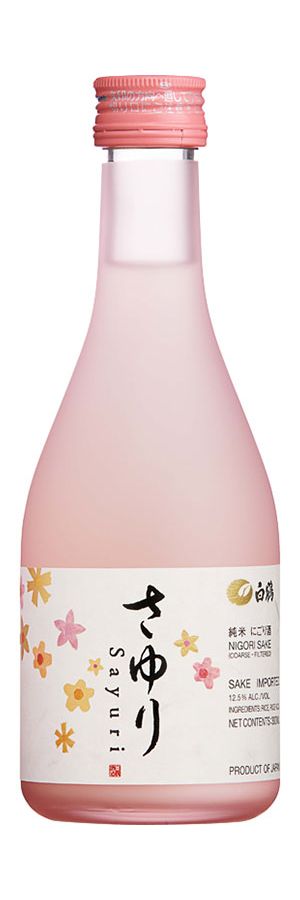
An unfiltered sake that delivers a luxuriously creamy texture paired with a distinctly sweet and fruity profile. Its milky appearance and smooth taste make it a favorite among those who prefer a richer sake experience.
Kikusui Perfect Snow:
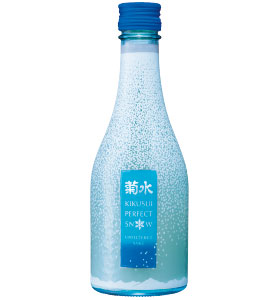
This nigori sake boasts a bold sweetness and a creamy, almost velvety finish. Its well-balanced flavor profile serves as an excellent introduction to the world of sweet sake, appealing to both newcomers and aficionados alike.
Dassai 50 Junmai Daiginjo:
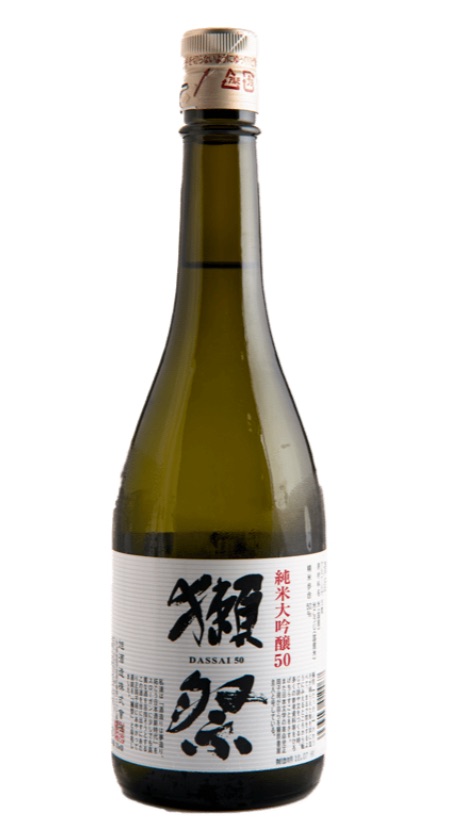
Offering a more subtle sweetness, this sake is characterized by its elegant and sophisticated fruit notes. The rice is polished down to 50%, resulting in a refined and complex flavor that is both inviting and intriguing.
Tozai Living Jewel Junmai:
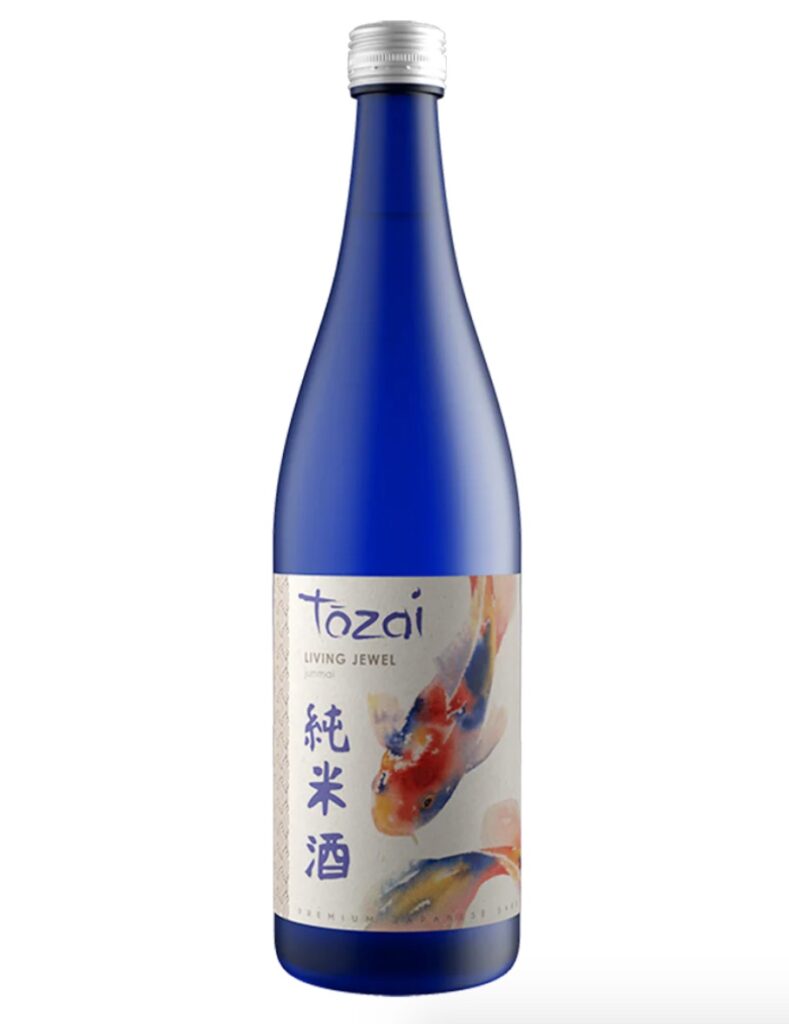
Known for its harmonious blend of sweetness and acidity, this sake features vibrant fruit flavors, making it highly approachable and enjoyable for a wide range of palates.
Fukucho Moon on the Water Junmai Ginjo:
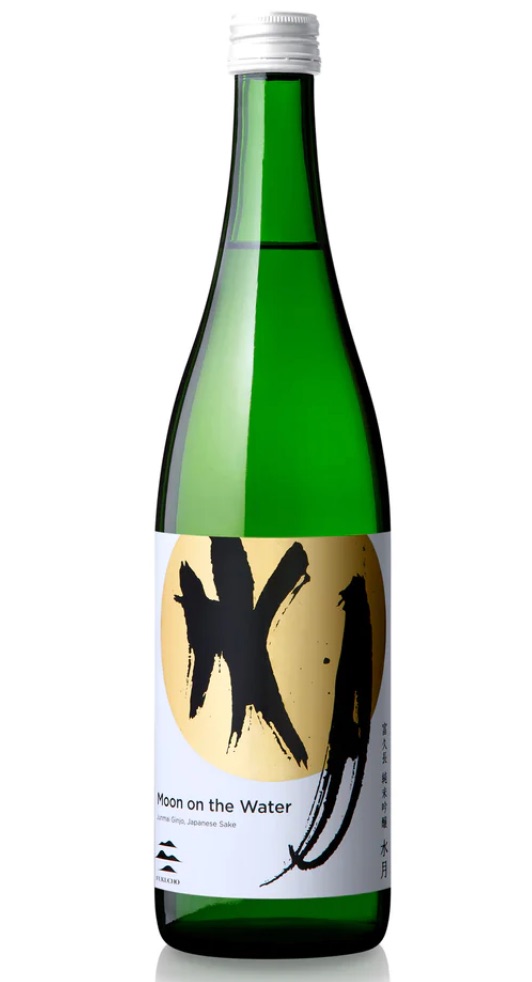
With its floral and melon notes, this sake provides a gentle sweetness that is perfectly balanced, offering a nuanced and layered drinking experience.
Sho Chiku Bai Shirakabegura Mio Sparkling Sake:

A sparkling sake with a light and refreshing sweetness, complemented by its effervescence. It's an excellent choice for celebrations or as a novel introduction to sake.
Gekkeikan Horin Junmai Daiginjo:
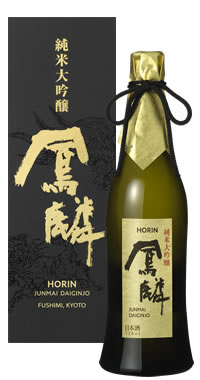
This premium sake features a delicate sweetness with hints of peach and melon. Its smooth and mellow character makes it a versatile choice for various occasions and pairings.
Ume no Yado Aragoshi Umeshu:
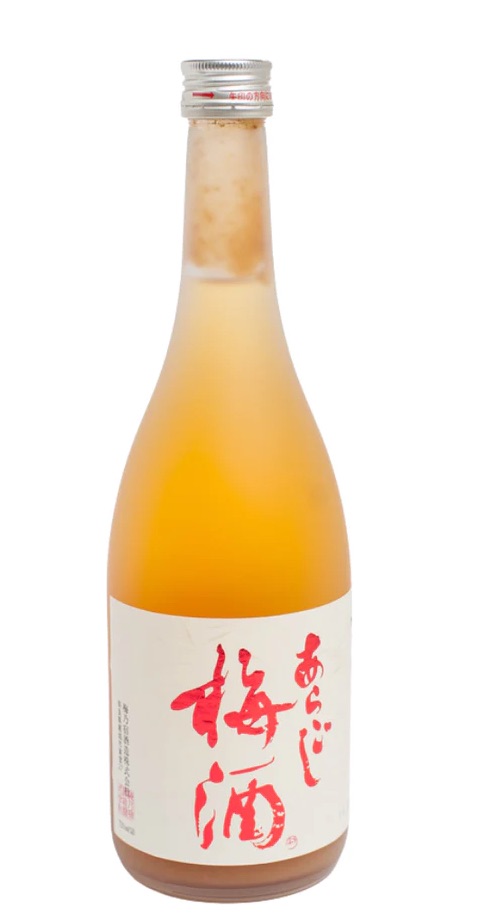
Though technically a plum wine, this umeshu is a fantastic representation of sweet alcoholic beverages from Japan. Its rich plum flavor and deep sweetness offer a unique and enjoyable alternative within the sweet sake category.
Nanbu Bijin Tokubetsu Junmai:
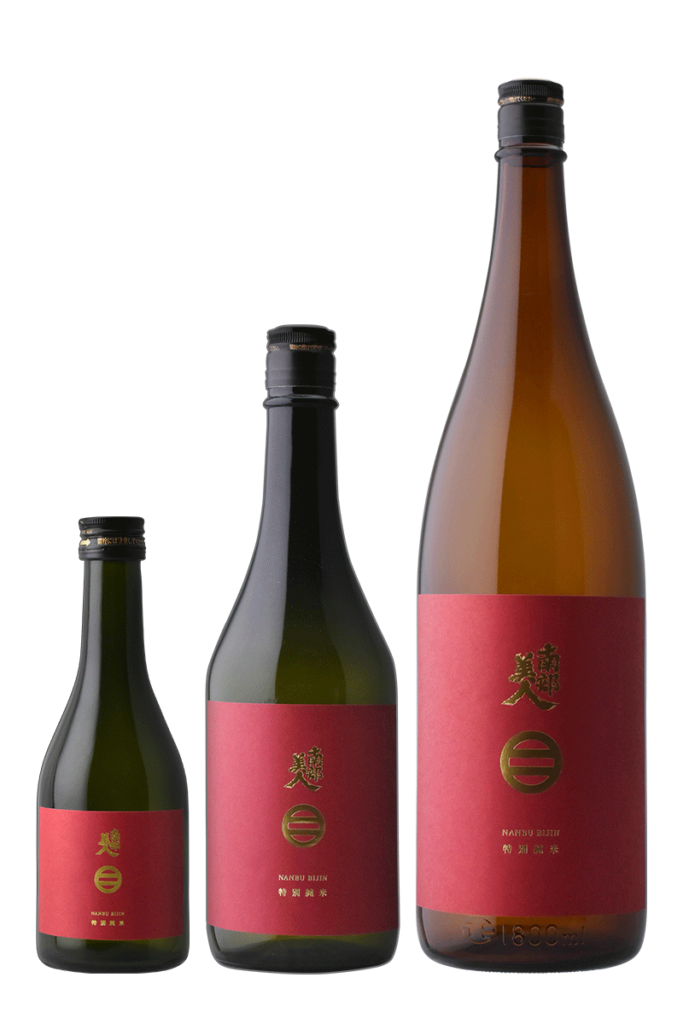
This sake strikes a beautiful balance between sweetness and acidity, with a light body and refreshing taste. It's an exemplary choice for those seeking a subtly sweet sake with depth and elegance.
Choya Umeshu:

Another plum wine option that showcases the sweeter side of Japanese alcoholic beverages. Choya Umeshu is renowned for its rich, sweet plum flavor and aromatic depth, providing a delightful and accessible entry into the world of sweet tastes.
These brands represent just a glimpse into the vast and varied world of sweet sake. Each offers a unique take on the balance of sweetness, acidity, and flavor, promising a rewarding exploration for those drawn to the sweeter things in life. Whether you're enjoying a quiet evening at home or celebrating a special occasion, these sweet sakes are sure to enhance the moment with their delightful flavors and aromas.
How to Enjoy Sweet Sake
Sweet sake, with its rich and often fruity or floral notes, provides a versatile drinking experience that can be enjoyed in various ways. Whether you're a seasoned sake enthusiast or new to this fascinating beverage, understanding how to best enjoy sweet sake can significantly enhance your tasting experience.
Choosing the Right Temperature
Sweet sake can be enjoyed at different temperatures, but serving it chilled often accentuates its sweetness and aroma. A cold temperature can bring out the sake's refreshing qualities, making it an excellent choice for warmer weather or as a dessert beverage. However, experimenting with slightly warmer temperatures can also reveal new dimensions of flavor, especially in richer, more full-bodied sweet sakes.
Glassware Matters

The choice of glassware can influence your enjoyment of sweet sake. For a more aromatic experience, consider using a wine glass. The wider bowl and narrower opening help concentrate the sake's aromas, enhancing your ability to detect its subtle sweet and fruity notes. Traditional sake cups (ochoko or guinomi) are also suitable, especially for more casual or traditional sake drinking experiences.
Pairing with Food
Sweet sake pairs wonderfully with a variety of foods. Its sweetness can complement the richness of desserts, such as chocolate or fruit-based treats, creating a harmonious balance between the sake and the dish. Additionally, sweet sake can also offset the saltiness of savory dishes, such as grilled meats or salty snacks, providing a delightful contrast that enhances the flavors of both the sake and the food.
Exploration and Experimentation
Exploring sweet sake involves trying different types and brands to discover your preferences. From light and mildly sweet to rich and dessert-like sakes, there's a broad spectrum to explore. Tasting different sakes at various temperatures and with different pairings can be a fun and educational experience, allowing you to appreciate the depth and diversity of sweet sake.
Exploring Sweet Sake

Embarking on a journey into the world of sweet sake is an adventure filled with delightful discoveries. Each bottle of sweet sake tells a story of its origin, rice variety, and the meticulous care taken during the brewing process.
Sake Tasting Events
Participating in sake tasting events or visiting sake breweries can be an excellent way to deepen your understanding and appreciation of sweet sake. These experiences often provide insights into the brewing process, the history of sake, and the chance to sample a variety of sakes under the guidance of experts.
Joining Sake Clubs
Joining a sake club or subscription service offers another avenue to explore sweet sake. These clubs often curate selections of sake from different regions and breweries, providing an opportunity to taste and compare sakes you might not otherwise encounter. It's also a great way to learn about sake pairing and serving suggestions.
Educational Resources
Utilizing educational resources, such as books, websites, and online courses, can enhance your knowledge of sweet sake. Understanding the nuances of sake production, the significance of rice polishing ratios, and the impact of fermentation techniques can enrich your tasting experience and help you make more informed choices when selecting sake.
In summary, enjoying and exploring sweet sake is a journey that combines sensory pleasure with cultural and educational discovery. By experimenting with temperatures, pairings, and exploring the wide range of sweet sakes available, you can deepen your appreciation for this exquisite beverage. Whether you're savoring a glass of sweet sake as a dessert, pairing it with a meal, or sharing it with friends, sweet sake offers a rich and rewarding experience that transcends its delightful taste.
